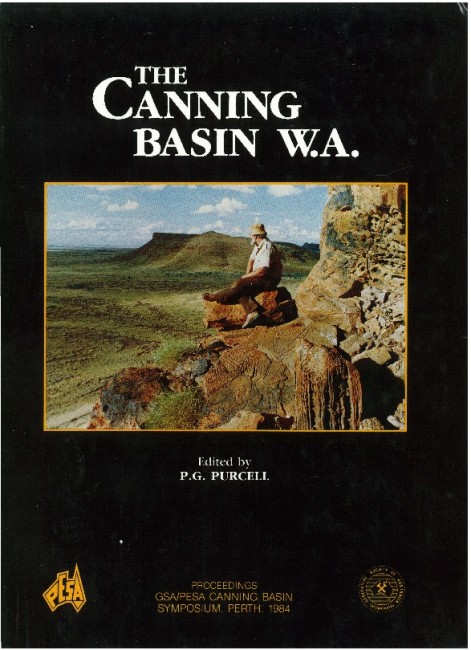Publication Name: The Canning Basin, W.A.
Authors: P.G. Purcell
Date Published: December 1984
Number of Pages: 28
Reference Type: Book Section
Abstract:
The onshore Canning Basin in north Western Australia covers an area of over 400,000 sq. km and contains over 10,000 m of mainly Palaeozoic sediments. The main basin elements trend NW /SE and extend into the offshore area where they are buried beneath seaward thickening Mesozoic and younger sediments. The main physiographic provinces in the basin are the spectacular limestone ranges along the northern rim, the Fitzroy River valley and the vast desert plain.The region was settled by man c.30,000 years ago. Major changes in the local culture occurred, c.5000 and c.100 years ago, caused by the migration of new peoples and technology into the area. The pattern of conflict over control of the land and its resources persists today in the "land rights" dispute. There are approximately 30,000 people resident in the area today, concentrated in Broome, Derby and Fitzroy Crossing and spread across the river valleys and coastal regions on pastoral stations and Aboriginal settlements.
The Geological Survey of Western Australia and the Bureau of Mineral Resources have played a leading role in the geological exploration of the basin since the first survey in 1884. Oil indications in the basin were first noted in 1919. Exploration since then involves two main cycles, named for the leading companies, Freney (1920-53) and Wapet (1953-1974). The current round involving many Australian and international companies commenced in 1976.
The Blina and Sundown discoveries proved the presence of commercial oil deposits but these small fields are considered only a hint of the basin's petroleum potential. Good source and reservoir rocks are present and major accumulations may occur in structural and/ or stratigraphic traps.


